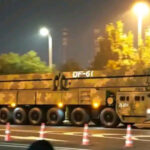Mitsubishi Electric has been tapped by Japan’s space agency to spearhead a comprehensive program to redesign how Japanese satellites get their power—from the photovoltaic cell itself to the protective cover glass and the finished solar array. The goal is blunt and strategic: cut cost, shore up supply, and harden performance for a booming market of LEO constellations and government spacecraft.
Key takeaways
JAXA selected Mitsubishi Electric under the Space Strategy Fund to develop domestic solar cells, cover glass, and solar arrays; a contract has been signed.
The company will mass-produce low-cost cells, verify terrestrial cover glass for space durability, and integrate both into new array designs.
A technical partnership with PXP Corporation will target perovskite/CIGS tandem cells expected to retain high efficiency while improving radiation resistance versus today’s conventional products.
The effort directly addresses global shortages and long lead times for space-grade cells and cover glass fueled by LEO constellation growth.
Mitsubishi Electric is listed as a lead organization in the 1st Phase of JAXA’s Space Strategy Fund focused on establishing a resilient satellite supply chain.
Why Japan is doing this: supply chain and strategy
Satellite builders worldwide have been squeezed by tight supply and rising prices for space-grade solar cells and cover glass as LEO fleets scale. Japan’s Space Strategy Fund (SSF) explicitly funds “Development/Verification of Parts/Components for the Establishment of Satellite Supply Chain,” with Mitsubishi Electric named under this theme to localize critical power hardware. This is as much industrial policy as it is engineering: domestic capacity reduces import risk and shortens schedules for commercial and defense spacecraft.
The technology pivot: perovskite/CIGS tandems vs. conventional III-V
For two decades, III–V multijunction (e.g., GaInP/GaAs/Ge variants) has dominated space due to unmatched efficiency and reliability; top “28–32% class” cells are standard for arrays today. But III–V wafers are costly and capacity-constrained. Mitsubishi Electric and PXP will pursue perovskite/CIGS tandem cells aimed at III–V-like efficiency with lower manufacturing cost and better volumetric scalability. Studies indicate perovskite/CIGS tandems maintain strong output after high-energy proton exposure, supporting the program’s claim of improved radiation hardness. If that promise holds through full space qualification (total ionizing dose, displacement damage, thermal-vacuum cycling), it would be a step-change for proliferated constellations.
From an expert standpoint, this is the right bet. III–V remains the performance benchmark, but modernization requires a cost/throughput play. The risk is classic: perovskite stability under UV, atomic oxygen, and thermal cycling must be proven at array scale—not just on lab coupons.
The unsung bottleneck: cover glass
Space cells live or die by their cover glass. Cerium-doped microsheet glass is widely used because it blocks damaging UV and mitigates electron/proton darkening while keeping visible/NIR transmittance high. Mitsubishi Electric plans to test terrestrial glass for space durability, with the aim of mass production of low-cost cover glass—a pragmatic way to de-risk availability and pricing. The cover glass line may sound mundane, but in recent years it has been a real lead-time driver. If Japan can qualify a domestic, scalable glass, arrays will get cheaper and faster.
From cells to arrays: integration and manufacturability
The program doesn’t stop at materials. Mitsubishi Electric will design new arrays that incorporate the domestic cells and cover glass and will work with local suppliers for a fully integrated, at-scale production pathway. That matters: array-level performance involves interconnectors, bypass diodes, panel substrates, and deployment mechanisms. Getting cell tech right but bottlenecking on panel assembly still kills schedule and cost. The firm’s space heritage as a satellite prime should help bridge lab tech into flight-qualified panels and EPC-friendly modules.
Competitive landscape and implications
Defense & ISR: Lower-cost, radiation-robust power is foundational for resilient ISR, comms, and early-warning constellations—areas where Japan seeks greater autonomy. Expect near-term application in LEO, then GEO once lifetime testing closes the reliability gap.
Market context: Established suppliers of space-grade III–V (e.g., AZUR Space, Spectrolab) set today’s efficiency and reliability bar; Mitsubishi’s tandem roadmap targets similar BOL efficiency while shifting the cost curve. If qualification succeeds, it pressures the III–V price/performance envelope.
Technology watch-items: Encapsulation chemistry for perovskites, adhesive/cover-glass interfaces under UV, and array-level crack tolerance under launch vibration. Public data on perovskite space testing is promising but not yet conclusive at production scale.
Mitsubishi Electric x JAXA Next-Gen Space Solar Program
A full-stack approach (cell → glass → array) to beat cost and lead-time while targeting radiation-tolerant performance with perovskite/CIGS tandems.
4.2 / 5
Pros
- End-to-end scope addresses real bottlenecks (cells, cover glass, arrays).
- Tandem architecture promises III–V-class efficiency at lower cost; literature supports radiation tolerance.
- Strong industrial logic aligned with JAXA’s supply-chain goals.
Cons
- Perovskite long-term stability in space (UV/thermal cycles/atomic oxygen) remains to be proven at array scale.
- Manufacturing yield/encapsulation for tandems may delay mass production timelines. (Inference based on known perovskite challenges.)









